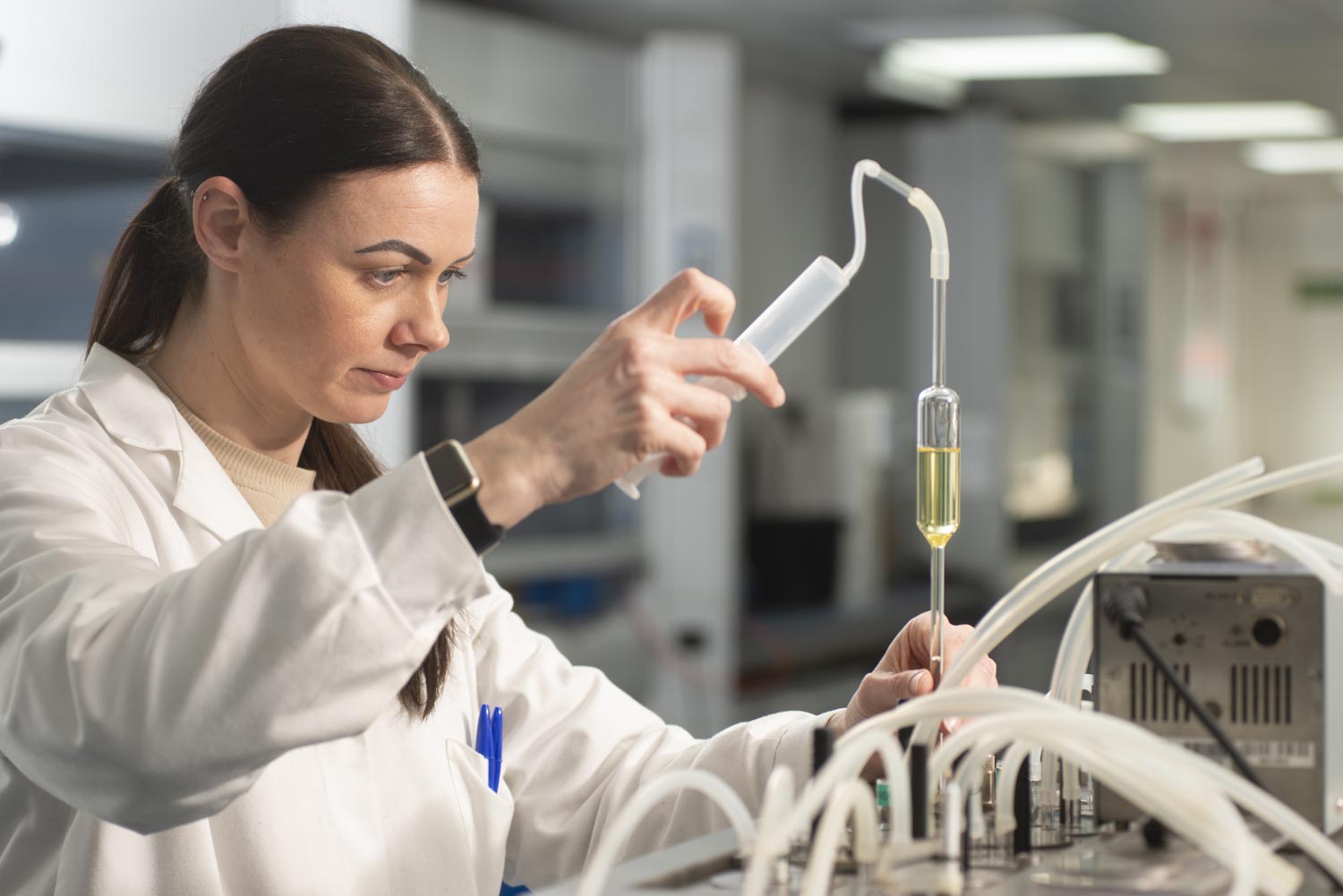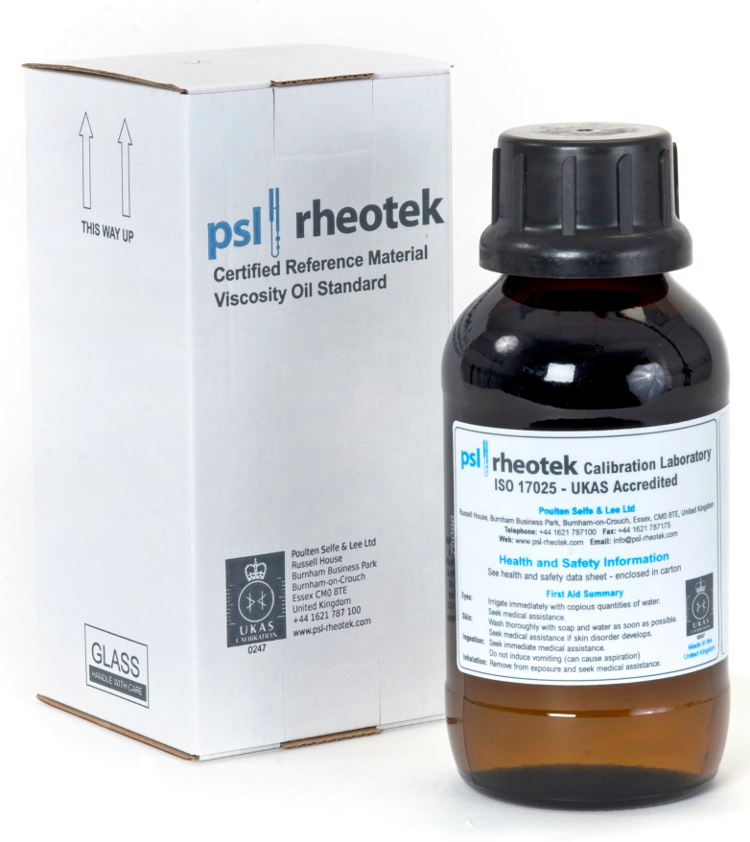Certified viscosity standards
for accurate calibration
Viscosity Oil CRM

Accuracy starts with a standard
Calibration you can rely on
- ISO 17034 certified All standards are calibrated in our accredited lab (Lab No. 5076) using reference viscometers and certified oils.
- Traceable and audit-proof. Each bottle ships with a certificate showing kinematic & dynamic viscosity at multiple temperatures (e.g.,25°C, 40 °C, 100 °C), uncertainty, batch ID, and calibration traceability.
- Wide viscosity range available. Standards range from low-viscosity solvents to heavy oils, ideal for calibrating diverse viscometers and test methods.
- Extended shelf life & stability. Bottles are sealed and labeled with expiry dates and recommended storage conditions to maintain accuracy for up to 2 years.
Supporting your compliance journey
Need | PSL Rheotek Solution |
| "We need traceable calibration for ISO/ASTM methods" | "All oils are certified and traceable to intrenationally agreed reference values." |
| "Our Audits require documented uncertainty" | "Every certificate includes expanded uncertainty and batch specific data." |
| "We calibrate multiple viscometers every week" | "Choose standard packs covering your full viscosity range to streamline workflows." |
| "We use automated systems too" | "All standards are compatible with automated glass and flow-based viscometers." |
What are viscosity standards used for?
Viscosity standards are reference fluids used to calibrate viscometers and validate viscosity test results. They ensure your measurements conform to internationally accepted reference values and help meet audit or accreditation requirements.
What calibration documentation is included?
Each bottle comes with an ISO 17034 certificate of calibration, listing certified kinematic viscosity values at multiple temperatures (typically 40 °C and 100 °C), plus uncertainty, batch number, and traceability info.
Are these standards compatible with automated systems?
Yes. Our standards can be used in manual, semi-automated, and fully automated viscosity systems without contamination or stability issues.
How do I use a standard for calibration ?
This will depend on the type of viscometer you are using. It is vital to follow the relevant instructions. Typically you will need to use at least two viscosity oil standards with different values in order to establish a new calibration.
What is the shelf life of viscosity standards?
Most standards remain stable for up to 2 years if stored correctly (sealed, away from heat/light). The expiration date and storage conditions are printed on each certificate and label.
How do I select the correct viscosity range?
Choose a standard close to the expected viscosity of your sample—ideally within ±20%—to ensure best calibration and uncertainty alignment. Contact us if unsure; we’ll match you with the ideal standard.

